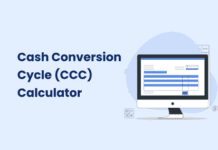Handling invoices manually is like juggling endless paperwork while racing the clock. You constantly battle delays, errors, and approval bottlenecks. Does this sound familiar? Accounts payable (AP) teams often feel stuck in an endless cycle of manual data entry, chasing approvals, and matching documents. It drains resources and energy.
But here is the game-changer: AP automation.
The global AP automation market, valued at $5,378.58 million in 2023, is set to soar to $17,047.16 million by 2032, growing at a 13.9% CAGR from 2024 to 2032. Why? Because businesses are realizing the transformative power of automation.
From cutting down processing time to improving accuracy, AP automation has become a necessity, not a luxury. It reduces errors, speeds up payments, and ensures compliance. Every wasted minute and misplaced invoice costs your business money. The good news? You will discover how automation can make your AP team faster, more innovative, and more efficient.
Understanding AP Automation
Accounts payable is the process businesses follow to pay vendors. The primary jobs of AP teams are to:
- Manage and check for invoice accuracy
- Ensures payments are made on time
- Manage vendor relationships
- Reconcile payment records
- Track spending and cash flow
- Ensure compliance with financial policies
- Resolve invoice discrepancies
- Maintain accurate records for audits
When done manually, it can be slow and prone to mistakes. AP automation solves this by using technology to speed things up. It handles tasks such as processing invoices, sending for approval, and making payments. This makes everything faster and more accurate. With automation, businesses can save time, reduce errors, and have better control over their finances.
How Accounts Payable Automation Works?
AP automation uses technology to make the accounts payable process easier and faster. Each step is streamlined, reducing manual work and improving accuracy. Below is a clear breakdown of how AP automation handles these tasks, making the business process smooth and efficient.
- Captures Invoices Electronically
AP automation uses Optical Character Recognition (OCR) to convert paper or email invoices into digital files. OCR scans the invoice and identifies key data points, such as invoice number, vendor name, and amounts. This data is then pulled into the system, where it’s stored and processed without manual input.
- Matches Invoices Automatically
The system uses predefined matching rules to check if the invoice matches the purchase order and delivery receipt. To confirm accuracy, these rules compare quantities, prices, and item details across documents.
- Sends for Approval Fast
Once the invoice data is captured and matched, it is automatically sent to the designated approver. The system identifies the correct person based on the workflow set by your company. The invoice is sent electronically, allowing for quick and remote approvals.
- Schedules Payments
After approval, the system schedules the payment according to vendor terms. The software sets up the payment for the correct date and ensures that the payment is made through the preferred method, such as electronic fund transfer or ACH, without manual intervention.
Common Challenges with Manual Accounts Payable Systems
Manual accounts payable processes are slow and often lead to costly mistakes. Identifying these issues helps businesses improve. Below are the five main challenges AP teams face.
- Data Entry Errors
Manual data entry is prone to human mistakes. Misentering invoice amounts, dates, or vendor details can lead to costly errors, such as overpayments or incorrect amounts being processed. These errors can be difficult to catch and fix later, causing vendor delays and miscommunications.
- Slow Invoice Approvals
In a manual system, invoices can get stuck in approval chains. If an approver is unavailable or paperwork is misplaced, this leads to long delays. This slows the accounts payable process and may even result in late payments.
- Missed Payment Deadlines
Without automated reminders or tracking, payment deadlines are easy to miss. This can lead to late fees or missing out on early payment discounts. Regularly missing deadlines can harm relationships with key vendors, impacting future deals or services.
- Difficulty Tracking Invoices
With paper-based or email-driven processes, tracking where an invoice is in the approval cycle becomes more challenging. Searching for documents and following up with team members is time-consuming and confusing, leading to bottlenecks in the payment process.
- Compliance and Audit Issues
Manual systems often lack detailed records or audit trails, making it difficult to prove compliance with financial regulations during audits. Missing documents or inaccurate records can also expose a business to penalties or failed audits, increasing risk.
Top 5 Benefits of AP Automation
Switching to AP automation brings several key benefits that can completely transform how your accounts payable team works. These benefits go beyond just saving time. They also improve accuracy, cut costs, and enhance vendor relationships. Let us discuss this in detail.
1. Faster Invoice Approvals
One of the most time-consuming steps in accounts payable is getting invoices approved. In manual processes, invoices often sit on desks or get lost in email chains. This causes delays that can lead to late payments and strained vendor relationships. With AP automation, this entire process becomes faster and more efficient.
- Automatic Routing: AP automation systems send invoices directly to the right person for approval. There is no need to chase down team members or send reminders.
- Real-Time Notifications: The system sends automatic reminders and notifications to ensure invoices are approved on time. This reduces bottlenecks and keeps the process moving smoothly.
- Approval from Anywhere: With cloud-based automation, team members can approve invoices from any location. This flexibility speeds up the approval process, especially for remote or traveling staff.
For example, suppose an invoice needs approval, but the approver is out of the office. With automation, they can review and approve it from their mobile device, ensuring that the payment process does not stall.
2. Improve Financial Visibility
With automation, you get real-time access to financial data. This means you can track cash flow, see which invoices are pending, and understand where your money is going at any moment. Better visibility means better financial control and the ability to make informed decisions.
Suppose you want to know your company’s total unpaid invoices. With manual processes, you would need to gather and sort through paperwork. With automation, you can see the total in seconds, allowing you to manage cash flow more efficiently.
3. Improved Accuracy in Approval Workflows
Manual approval workflows often lead to mistakes, such as approving incorrect amounts or invoices that do not match purchase orders. Automation reduces these errors by ensuring that invoices are reviewed properly before approval.
- Three-Way Matching: The system automatically compares the invoice, purchase order, and receipt note to ensure they match before sending it for approval. This prevents overpayments or duplicate payments.
- Built-In Controls: Automation ensures that only authorized personnel can approve certain invoices, which adds an extra layer of security and prevents unauthorized payments.
For example, suppose your company orders 100 items, but the delivery only includes 80. With manual approval, this mistake might be missed, causing an overpayment. AP automation solves this by checking the invoice, purchase order, and receipt to ensure they match. It flags any errors before payment is approved. This way, you only pay for what you receive. Plus, automation ensures that only the right people can approve important payments, which adds extra security.
4. Better Vendor Communication
When your vendors send an invoice, they want to know when they will get paid. AP automation improves communication with vendors by providing real-time updates on the status of their invoices. The best AP automation systems include vendor portals where vendors can log in to check the status of their invoices. This reduces the need for back-and-forth emails or phone calls asking about payment status.
5. Transparent and Traceable Invoice Records
AP automation creates a clear digital record of every action taken on an invoice. This digital trail shows who handled the invoice, when it was approved, and any changes made. Instead of searching through paper files, you can find all transaction details instantly. These detailed records make audits easier by providing quick access to the needed documents.
Automation ensures that all steps in the accounts payable process are fully traceable, reducing the risk of mistakes and improving compliance. This level of transparency helps answer any questions or resolve issues quickly.
Financial and Non-Financial ROI of AP Automation
Adopting AP automation is an investment that delivers long-term returns, both in financial and operational areas. Beyond immediate cost savings, it provides value that strengthens your business over time. Here is the complete breakdown:
| Category | Benefit | Description |
|---|---|---|
| Financial ROI | Lower Processing Costs |
|
| Early Payment Discounts |
| |
| Reduced Penalties |
| |
| Non-Financial ROI | Scalability |
|
| Employee Morale |
| |
| Vendor Trust |
| |
| Compliance & Security |
|
How AP Automation Integrates with Existing Systems
A major concern for accounts payable teams when adopting new technology is how it will work with the existing systems. AP automation is designed to integrate seamlessly with your existing platforms. This means your current ERP systems, financial software, and databases can continue running while automation enhances the process. Let us break down how this integration works and why it matters.
1. Seamless Integration with ERP Systems
Many businesses use ERP systems such as SAP, Xero, or QuickBooks to manage financial data. You can connect directly to these systems through an integrated payable system. This creates a smooth flow of data between different departments. The system syncs automatically, so there is no need to enter data twice.
2. Real-Time Data Syncing
One of the key features of AP automation is real-time data syncing. The information is updated instantly whenever an invoice is received, approved, or paid. This helps your team access the most current data. They can make better decisions because they always have up-to-date information.
You must wait for reports or enter updates manually. With automation, everything happens right away. This helps you manage cash flow more easily and avoid costly delays.
3. Centralized Data Management
AP automation stores all your invoice and payment data in one place, making it easier to track each step of the process. Your team can quickly pull up reports, check unpaid invoices, or see vendor activity—all from one dashboard.
4. Enhanced Security and Compliance
AP automation makes your system more secure. It tracks every transaction and follows strict rules for approvals, helping your business comply with financial regulations. By flagging any unusual activity, it also reduces the chance of fraud.
For example, if your company requires extra approvals for large invoices, AP automation ensures that these rules are followed every time. It will not allow a payment to go through without the right approvals.
5. Scalability for Growing Businesses
As your business grows, the number of invoices increases. Manual processes become harder to manage. But with AP automation, you can scale up without adding extra work for your team. The system adapts as you grow, making sure everything runs smoothly.
Now, let us explore how Peakflo AI tools take these benefits to the next level.
How Peakflo Transforms AP Automation?
Peakflo provides powerful tools to automate your accounts payable process. These tools save time, reduce errors, and improve financial control.
Here is how Peakflo helps:
- Purchase Requests & Orders: Manage and track purchase requests, quotes, and orders in one place. This keeps everything organized and ensures purchases are approved before invoices arrive.
- AI-Powered Invoice Capture: Peakflo’s technology scans invoices automatically. It eliminates manual entry, reduces mistakes, and speeds up the process.
- Automated Approval Workflows: Create workflows to route invoices to the right people for approval. Approvals can be done from anywhere, which speeds things up.
- Auto-Disbursement: Peakflo automatically handles bulk payments to vendors. This ensures vendors are paid on time, without manual effort.
- Budget Management: Track spending in real-time. It flags any purchases that exceed your budget before you approve them.
- Vendor Onboarding: Easily onboard vendors with simple forms. All vendor info is verified and securely stored in one place.
- Vendor Portals: Vendors can check invoice statuses, view payments, and upload invoices through the portal. This cuts down on back-and-forth communication.
- Two-Way and Three-Way Matching: Peakflo automatically matches invoices with purchase orders and receipts. This ensures payments are accurate and only made when everything checks out.
- Reconciliation: It automatically matches payments with invoices, helping your team close books faster.
Conclusion
AP automation helps make accounts payable faster, easier, and more accurate. It cuts down the time spent on tasks such as processing invoices, getting approvals, and tracking payments. This leads to fewer mistakes and stronger relationships with vendors. Businesses also gain better control over their finances.
Peakflo has improved AP automation processes for many companies. Rey.id saved 100 hours a month, while Qoala cut approval times by 90%. MyRobin and Hai Sia also made their payment and vendor management smoother through automation.
Ready to see how automation can transform your AP process? Book a demo tour with Peakflo today and discover how their solutions can streamline your operations!









![Why AI Sales Calls Are Making Good Sales Reps Even Better [2025 Guide] ai sales calls](https://cdn-kmjmp.nitrocdn.com/YvtqmrsiHUxqerlSiZgbfzqqTARWTElr/assets/images/optimized/rev-834053b/blog.peakflo.co/wp-content/uploads/2025/09/65168cf6-3001-4733-8cbc-12d5684cf449-218x150.webp)

































